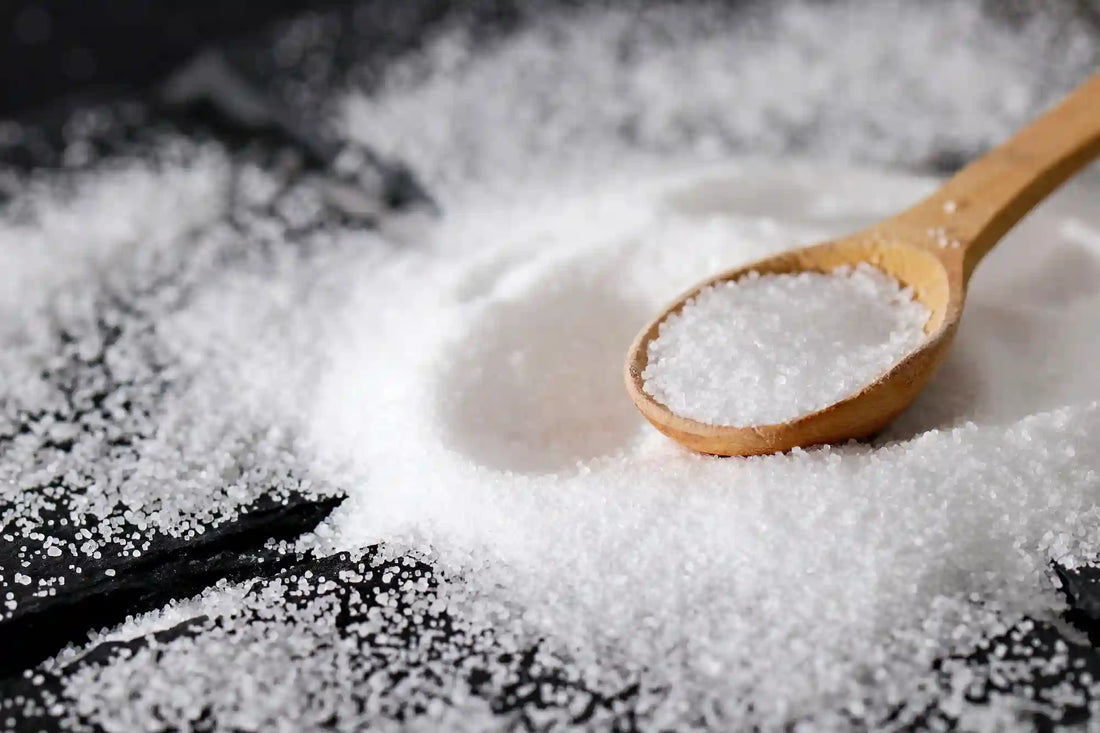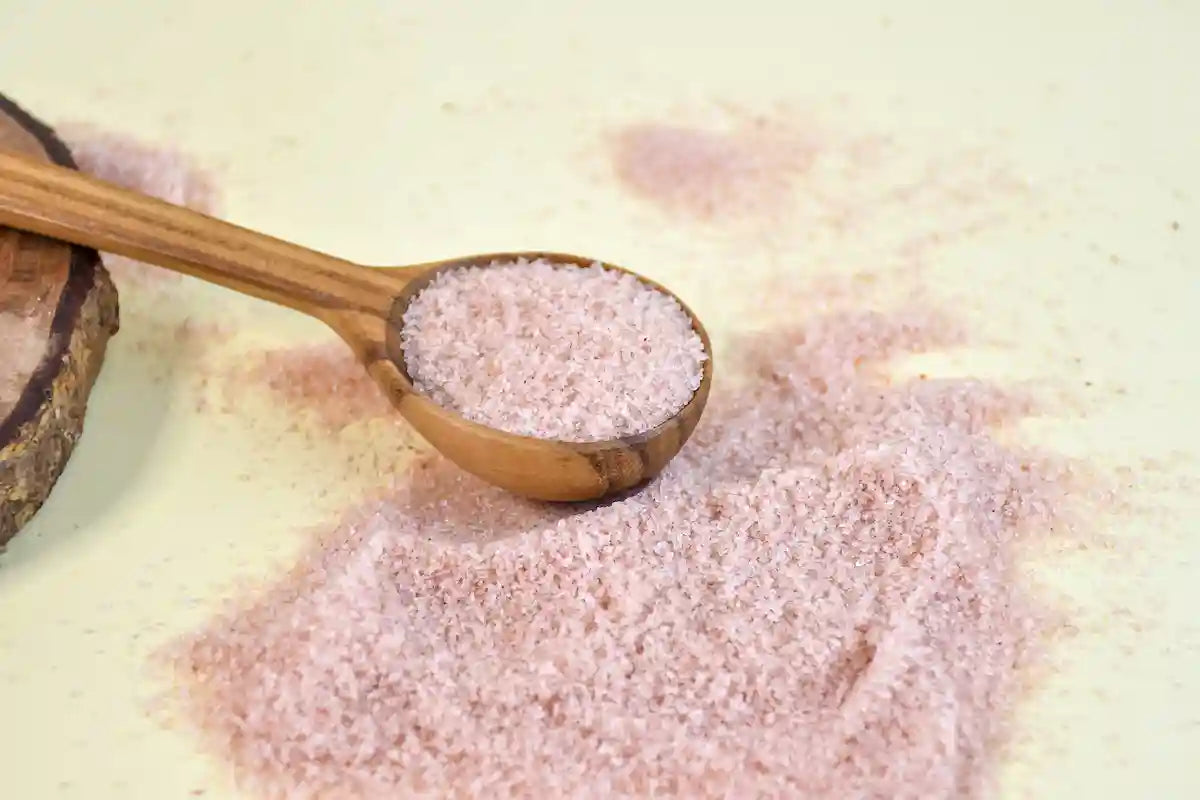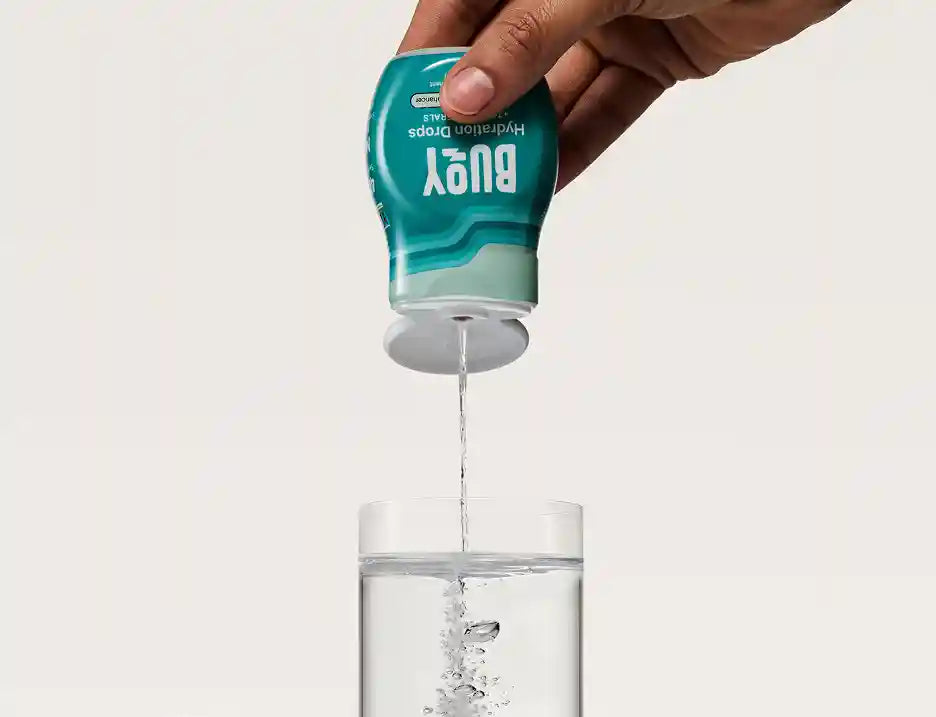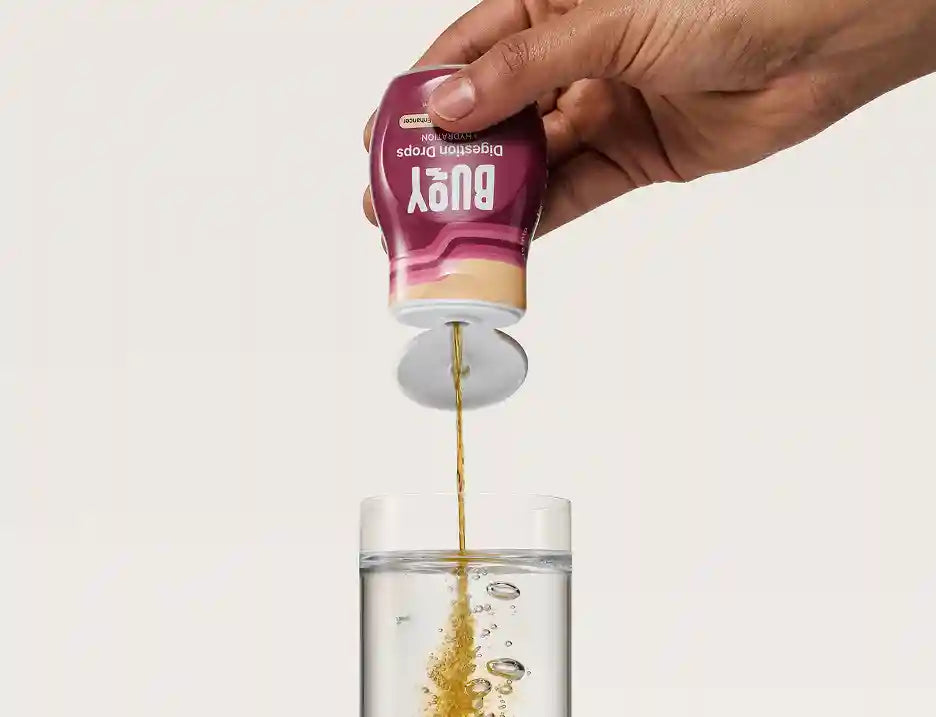
The Dangers of Low Sodium Levels and What You Can Do To Prevent It
We hear about the risks of eating too much salt all the time. But too little? That can be just as dangerous - if not more so. Low sodium levels, also known as hyponatremia, can affect your energy, cognition, and even your heart. And while it’s tempting to think this only applies to marathon runners or people with certain health conditions, the truth is, it can happen to anyone. Especially if you're drinking lots of water but not replacing lost minerals.
Essential Takeaways
- The Dangers of Low Sodium Levels: Low sodium levels can have severe health implications ranging from cognitive disturbances to cardiovascular issues.
- It's not just athletes or those who are physically active that are at risk—everyone, from office workers to busy parents, needs to be aware of the dangers of inadequate sodium intake.
- Upgrade Your Hydration with Electrolytes: Hydration Drops offer a comprehensive solution with their unique blend of vitamins, minerals, and antioxidants. By integrating them into your daily routine, you're ensuring proper hydration and fortifying your defense against the risks of dangerously low sodium levels.
In this guide, we’ll break down the signs of dangerously low sodium levels, what counts as a dangerous sodium level, and how to make sure you’re keeping things balanced - without overcorrecting.
- Understanding Low Sodium Levels
- What Is a Dangerous Sodium Level?
- Why Can't I Just Eat More Salt?
- Is Low Sodium Dangerous If You’re Otherwise Healthy?
- The Importance of Electrolyte Balance
- How Hydration Drops Can Help
- Conclusion
Understanding Low Sodium Levels
In today's health-conscious world, there's been an active effort to reduce sodium intake. Public health campaigns, dietary guidelines, and media often spotlight the risks of high sodium intake, especially given the widespread consumption of processed foods.
Consequently, the risks associated with excessive salt, such as hypertension and cardiovascular diseases, are well-publicized. However, the other side of the spectrum—the dangers of low sodium levels—often remains overshadowed (1).
What is Hyponatremia?
Hyponatremia, or dangerously low sodium levels, is a condition that occurs when the concentration of sodium in your blood is abnormally low. Sodium is an electrolyte that helps your muscles and nerves work properly. It also helps to control fluid balance in the body (2).
Prevalence of Low Blood Sodium
Surprisingly, low blood sodium is quite common. Nearly 15% of adults admitted to hospitals have hyponatremia, making it one of the most frequently encountered electrolyte disorders.
While many of these cases arise from medical conditions or medications, a significant number result from dietary choices or misunderstandings about hydration.
Low sodium levels can occur for a variety of reasons, including certain medical conditions like kidney disease, heart failure, or hormonal disorders. Even excessive sweating, diarrhea, or drinking too much water can lead to hyponatremia (3).

Misunderstandings About Hydration
One factor contributing to the prevalence of low sodium levels is the popularized notion of “drinking more water.” While staying hydrated is undoubtedly crucial, overconsumption of water without adequate sodium intake can dilute the body's sodium concentration.
For instance, some marathon runners, in their efforts to stay hydrated, inadvertently drink excessive amounts of water, which can lead to exercise-associated hyponatremia (4).
Want to know the right way to hydrate? Check out our blog post How to Hydrate Quickly and Effectively.
Shift Toward Low-Sodium Diets
Furthermore, the surge in health and wellness trends has pushed many individuals towards low-sodium diets. These diets often exclude processed foods, which, though commendable, can sometimes lead to an insufficient sodium intake.
Sodium isn’t just present in table salt. You’ll also find it in foods like meats, dairy, and some vegetables. Without a conscious effort to maintain a balanced diet, individuals on strict, low-sodium diets might inadvertently decrease their sodium levels to potentially dangerous thresholds (2).
Lack of Awareness
Since the symptoms of low sodium levels—fatigue, headaches, and nausea—can be subtle and similar to other conditions, they might go unnoticed until more severe symptoms develop.
The symptoms of hyponatremia can vary greatly depending on the severity and rapidity of the decrease. Mild symptoms may include headache, fatigue, and nausea. In more severe cases, low sodium levels can lead to confusion, seizures, coma, or even death.
Certain groups are at higher risk for developing low sodium levels. These include athletes who may lose sodium through sweat, older adults whose kidneys may not adequately remove water, and people managing chronic diseases such as heart failure or cirrhosis (2).
Other electrolytes can also display signs when they’re out of balance. Learn more in our blog post Understanding the Signs of Low Electrolytes.
A Balancing Act
Managing sodium levels is a delicate balance. It's not just about limiting excessive intake but also ensuring that we don't swing too far in the opposite direction.
As research progresses and awareness grows, it becomes imperative for both health professionals and the public to understand the nuances of sodium intake and the need for moderation and balance in maintaining optimal health (5).
What Is a Dangerous Sodium Level?
When doctors talk about dangerously low sodium levels, they’re usually referring to anything below 135 milliequivalents per litre (mEq/L). At this point, you’re officially in the territory of hyponatremia. But it’s not always black and white - your symptoms and overall health also play a role in determining how serious the situation is.
-
Mild hyponatremia: 130–134 mEq/L
You might feel a little foggy, tired, or weak.
-
Moderate hyponatremia: 125–129 mEq/L
This can bring on headaches, nausea, and confusion.
-
Severe hyponatremia: Below 125 mEq/L
You’re now at risk for seizures, coma, and even death if untreated.
So, what sodium level is dangerous? Anything under 135 mEq/L is worth paying attention to - especially if your symptoms match up. And if you’re under 130? It’s time to talk to your doctor.
Why Can't I Just Eat More Salt?
It might seem like a simple solution: low on sodium, just sprinkle a bit more salt on your food. However, it’s not that simple:
-
Sodium Balance is Complex: Your body has intricate systems to manage sodium levels. Just adding salt to your diet might not effectively address a sodium imbalance, especially if other physiological aspects are involved.
-
Potential Health Risks: Excessive salt intake can lead to high blood pressure, a significant risk factor for cardiovascular diseases. So, while you're trying to address one issue (low sodium), you might inadvertently introduce another. Overloading on any electrolyte can have repercussions. Discover what happens when you have too many electrolytes.
-
Processed Foods Are Not the Answer: For some, adding more salt might mean turning to processed foods high in sodium. However, these foods often come with unhealthy fats, sugars, and preservatives. Instead of benefiting your health, they can do the opposite. It's always better to get sodium from natural sources or controlled supplements like Buoy Hydration Drops.
- The Holistic Approach: There might be underlying health conditions or medications affecting your sodium levels. In such cases, merely adding salt won't help. It's essential to see the bigger picture and address the root causes, ensuring your body gets what it needs without any unwanted side effects.
While salt is indeed a direct source of sodium, the balance our body requires is more nuanced than just adding more of it to our meals. It's about understanding the body's needs, the potential side effects, and choosing the healthiest and most effective ways to maintain that critical balance (4).
Remember, it's always best to consult with a healthcare professional about significant dietary changes.
Learn more about the implications and remedies for sodium imbalance in our detailed guide on Sodium (Salt) Deficiency: Causes, Symptoms, and Treatment.
Is Low Sodium Dangerous If You’re Otherwise Healthy?
A common question is: “Is low sodium dangerous if I don’t have a medical condition?” The answer is yes. Even without a chronic illness, dangerous low sodium levels can sneak up on you.
It can happen if:
-
You’re sweating a lot and only drinking water (with no electrolyte replacement).
-
You’re on a low-sodium diet without enough natural sodium from food.
-
You’re taking medications like diuretics or antidepressants that affect fluid balance.
-
You’re drinking excessive fluids due to health trends that push “more water = better.”
Healthy people can develop exercise-associated hyponatremia from workouts, heat exposure, or overhydration. In fact, studies show that 10–15% of endurance athletes experience it at some point. But it’s not limited to athletes - office workers, busy parents, and anyone trying to “hydrate more” without electrolyte support could be at risk too.
Buoy: A Superior Choice for Sodium Balance
Buoy's Hydrating Wellness Drops offer a balanced approach to replenishing sodium With a precise blend of electrolytes, vitamins, and minerals, Buoy ensures that your sodium levels are restored and harmoniously balanced with other vital electrolytes.
It's a hassle-free, efficient solution, eliminating the guesswork and potential pitfalls of excessive salt consumption, making it an ideal choice for those seeking optimal hydration and health.
The Importance of Electrolyte Balance
Electrolytes, including sodium, play an essential role in our body's function. They help maintain the balance of fluids, aid in muscle contraction, and support nerve function. An imbalance in electrolytes, whether too much or too little, can disrupt these essential processes and lead to serious health consequences.
For example, low sodium levels can result in the swelling of cells, which can disrupt tissue function and even cause severe neurological effects. Therefore, maintaining the right balance of electrolytes is crucial for overall health and wellness; (6).

Learn More About Buoy Hydration Drops
Impact on Daily Life
Consider how low sodium levels can affect daily tasks. For a student, low sodium might mean difficulty in concentration, affecting academic performance. For a professional musician, a slight tremor due to sodium imbalance could impact a performance.
Beyond Sodium
While this guide emphasizes the dangers of low sodium, it's vital to understand that sodium is just one cog in the complex machinery of electrolytes. Potassium, calcium, and magnesium also play important roles. An imbalance in any one of these can throw off our body's delicate harmony.
Dive deeper into the topic of electrolyte balance in our blog post How to Restore Electrolyte Balance.
Does Coffee Lower Sodium Levels?
If you start your day with a couple of cups of coffee, you’re not alone. But can your caffeine habit affect your sodium balance? Let’s unpack it.
Caffeine acts as a mild diuretic, which means it can increase urine output - leading to the loss of water and electrolytes, including sodium. While coffee itself doesn't directly lower sodium levels, if you’re drinking large amounts (think 4+ cups a day) and not replenishing electrolytes, it could contribute to mild sodium depletion over time - especially if paired with a low-sodium diet.
Here’s the key: It’s not about cutting out coffee. It’s about balancing hydration. That means pairing your caffeine with water and electrolyte-rich hydration like Buoy. So no, coffee isn’t the enemy - but overdoing it without replacing lost minerals might tip your balance.
Buoy Drops to the Rescue
Packed with the right blend of electrolytes, vitamins, and minerals, Buoy’s electrolyte and mineral drops can help restore the electrolyte balance in your body, helping to prevent the dangerous effects of low sodium levels.
How Hydration Drops Can Help
Buoy Hydration Drops are an innovative solution designed to replenish lost electrolytes, including sodium. They work by adding a concentrated dose of electrolytes to your preferred beverage, helping you quickly restore the balance of sodium and other essential electrolytes in your body.
Buoy Hydration Drops: A Daily Essential
At its core, Buoy Hydration Drops serve one fundamental purpose: to replenish lost electrolytes quickly and efficiently. With just a light squeeze in your drink of choice, you’ll receive a boost of sodium and other essential electrolytes.
This isn’t just about quenching your thirst. It’s about supporting your body’s intricate processes that require a precise balance of minerals.
How to Use Buoy
Add a light squeeze of Buoy’s electrolyte and mineral drops to any drinks you normally enjoy throughout the day, including coffee, tea, water, juice, soda, and even alcohol.
How often should you use Buoy? Buoy drops are designed to be versatile and user-friendly, making them easy to incorporate into your daily routine. Depending on your activity level, environment, and specific hydration needs, you might use Buoy more frequently on some days than others.
For everyday hydration needs, consider adding a light squeeze to your drinks 1-3 times a day. However, on more active days, when you're sweating more or spending time in hot climates, you might find that you benefit from using Buoy more often.
Listen to your body, observe your hydration cues, and adjust your Buoy usage accordingly. Remember, it's all about achieving that perfect balance for optimal health and wellness.
Buoy is for Everyone
We often associate hydration and electrolyte balance with athletes, imaging sweat-soaked jerseys and marathon runners. But the truth is, optimal hydration is essential for everyone every day. Let’s explore how Buoy Hydration Drops can make a difference in your life, whether you’re at the office, home, or even just taking your dog for a walk.
All Day, Every Day
What truly sets Buoy apart is its comprehensive formula. Beyond sodium, it offers a blend of vital electrolytes, vitamins, minerals, and antioxidants. Rather than just replacing what’s lost, Buoy provides the essential nutrients your body needs to function at its best, no matter what the day throws at you.
In essence, Buoy supports everything you love to do. It's not just about hydrating. It's about optimizing, energizing, and thriving in every part of your life. So, why wait? Make Buoy Hydration Drops part of your daily routine and experience the benefits across all facets of your life.
Conclusion
Dangerously low sodium levels can be a severe health issue, but with knowledge and the right tools, it can be prevented. Understanding the importance of maintaining proper electrolyte balance, particularly sodium, is a critical step toward healthier living.
Buoy's electrolyte and mineral drops are an innovative and effective solution to combat low sodium levels. With a unique blend of electrolytes, vitamins, and minerals, they can help you maintain a balanced electrolyte level and ensure optimal health.
Don’t wait until it's too late. Start taking steps now to protect your health by maintaining proper electrolyte balance. Try Buoy's Hydration Wellness Drops today and give your body the sodium it needs.
Discover more about Buoy Hydration Drops and explore their entire collection for a healthier, hydrated you.
References:
- Rondon, H., Badireddy, M. (2023). Hyponatremia. In StatPearls. StatPearls Publishing. Retrieved from https://www.ncbi.nlm.nih.gov/books/NBK470386/
- Healthline. (2020). Hyponatremia: Understanding Low Blood Sodium. Retrieved from https://www.healthline.com/health/hyponatremia
- Popkin, B. M., D'Anci, K. E., & Rosenberg, I. H. (2010). Water, Hydration, and Health. Nutrition Reviews, 68(8), 439–458. Retrieved from https://www.ncbi.nlm.nih.gov/pmc/articles/PMC2908954/
- Shirreffs, S.M., et al. (2004). Fluid and Electrolyte Needs for Preparation and Recovery from Training and Competition. Journal of Sports Sciences, 22(1), pp. 57–63. Retrieved from https://www.tandfonline.com/doi/abs/10.1080/0264041031000140572
- Koeppen, B. M. (2009). The Kidney and Acid-Base Regulation. Advances in Physiology Education, 33(4), 275–281. Retrieved from https://journals.physiology.org/doi/full/10.1152/advan.00054.2009
- Healthline. (2019). Electrolytes: Functions, Imbalance, and Sources. Retrieved from https://www.healthline.com/nutrition/electrolytes








